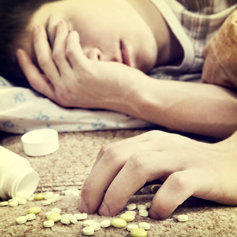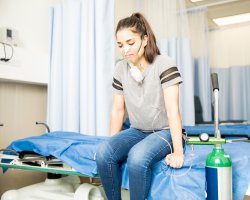Prescription Drug Take Back Day Provides Opportunity to Make Homes Safer

Storing unused prescription drugs in the home is no longer a safe thing for parents to do. Thankfully, there are options for parents who want to safely and ethically dispose of medications they do not need.
What is Prescription Drug Take Back Day?
The DEA launched its National Prescription Drug Take Back Day Initiative to improve public safety. “The National Prescription Drug Take Back Day aims to provide a safe, convenient, and responsible means of disposing of prescription drugs, while also educating the general public about the potential for abuse of medications.” That is the opening line from the Drug Enforcement Administration, a federal law enforcement organization tasked with cracking down on the illegal manufacture, trafficking, dealing, and use of drugs in this country.
This year, the DEA will host its first event on April 22nd, from 10:00 a.m. to 2:00 p.m. The next event will be held in October. In addition to hosting its take back sites, the DEA also encourages other law enforcement agencies to become involved in hosting take back events in their communities.
The DEA’s dedicated webpage on Prescription Drug Take Back Day has a search feature that allows people to find the nearest safe disposal site. The site closest to them may be a DEA-run site or a site run by local law enforcement participating in Take Back Day.
Are Prescription Drug Take Back Days Effective?

Some of the statistics from recent events include the following:
October 2022:
- Total Collection Sites: 4,902
- Total Weight Collected: 647,163 lbs. (324 Tons)
- Total Law Enforcement Office Participation: 4,340
- Total Weight All Time: 16,636,729 lbs. (8,318 Tons)
April 2022:
- Total Collection Sites: 5,144
- Total Weight Collected: 721,093 lbs. (360 Tons)
- Total Law Enforcement Office Participation: 4,427
- Total Weight All Time: 15,989,566 lbs. (7,995 Tons)
October 2021:
- Total Collection Sites: 4,982
- Total Law Enforcement Participation: 4,276
- Total Weight Collected: 744,082 lbs. (372 Tons)
April 2021:
- Total Collection Sites: 5,060
- Total Law Enforcement Participation: 4,425
- Total Weight Collected: 839,543 lbs. (420 Tons)
The April and October Prescription Drug Take Back Days are highly effective because the DEA can organize law enforcement offices, pharmacies, medical practices, and hospitals across the country to work together to collect as many unused medications for safe disposal as possible.
I Missed Prescription Drug Take Back Day. Where Else Can I Dispose of Meds?
While there are ways to dispose of unused pharmaceutical drugs on your own, medicine take-back programs are the safest and most convenient.
But what if you miss the April or October Take Back Day?
The DEA keeps a running record of permanent collection sites. Such programs may be run by retail locations, hospitals, clinics, pharmacies, and/or law enforcement entities, but all have been vetted by the DEA and are certified to collect and dispose of unused pharmaceutical drugs. To verify a site, the DEA Diversion Control Division Registration Office has a call center that can be reached at 1-800-882-9539.
If you missed the April or October nationwide take-back days, and if there is no permanent drug take back sites near you, the DEA also keeps a database of other take back events that occur at different times throughout the year. The DEA staff who manage the 1-800-882-9539 hotline mentioned above can provide you with a list of take back events in your area, such as pharmacies that may have a drop box for unused medication or law enforcement agencies who may be able to dispose of unused meds.
If no safe take back facility or program is available, the Food and Drug Administration outlines steps people can follow in disposing of their medications safely. The FDA produced a video tutorial on how to do this and included written instructions outlining the best way to dispose of medications safely.
What’s the Danger in Keeping Unused Medications in the Home?

According to the Partnership to End Addiction, two-thirds of teens and young adults who report misusing prescription drugs say they got them from home or friends. Obtaining drugs “from home” often means getting them out of the family medicine cabinet. Given that the Substance Abuse and Mental Health Services Administration reports more than 5,700 youths use prescription pain relievers without a doctor’s guidance for the first time each year, that means thousands of young Americans are having their first drug experience with mind-altering pills after obtaining the pills from somewhere in their home, with or without their parents knowing about it.
According to UCLA research published in the Journal of the American Medical Association, overdose deaths among U.S. teenagers nearly doubled in 2020. They rose another 20% in the first half of 2021 compared with the ten years before 2020. That means young people are more likely to die from using drugs, even as some reports suggest teens today are less likely to experiment with drugs than teens a few years ago were.
A Drug-Free Home is a Safe Home
The above findings point to two things: Teens are at serious risk for harm when they experiment with drugs and often have their first drug-use experience with prescription drugs. Therefore, unused medications left in the home pose no benefit but carry a significant risk. Given the ease with which parents can dispose of medications, families should safely remove unused meds. Their homes will be significantly safer for all who live and visit there.
Sources:
- DEA. “National Prescription Drug Take Back Day is April 22nd, 2023 – 10 a.m. to 2 p.m.” Drug Enforcement Administration, 2023. dea.gov
- DEA. “Take Back Day.” Drug Enforcement Administration, 2023. dea.gov
- DEA. “Controlled Substance Public Disposal Locations – Search Utility.” Drug Enforcement Administration, 2023. dea.gov
- FDA. “Where and How to Dispose of Unused Medicines.” Food and Drug Administration, 2023. fda.gov
- SAMHSA. “Rise in Prescription Drug Misuse and Abuse Impacting Teens.” Substance Abuse and Mental Health Services Administration, 2022. samhsa.gov
- PTEA. “Safeguard Against Medicine Misuse: Securing and Disposing Medications.” Partnership to End Addiction, 2018. drugfree.org
- JAMA. “Trends in Drug Overdose Deaths Among U.S. Adolescents, January 2010 to June 2021.” Journal of the American Medication Association, 2022. jamanetwork.com


 ®
®